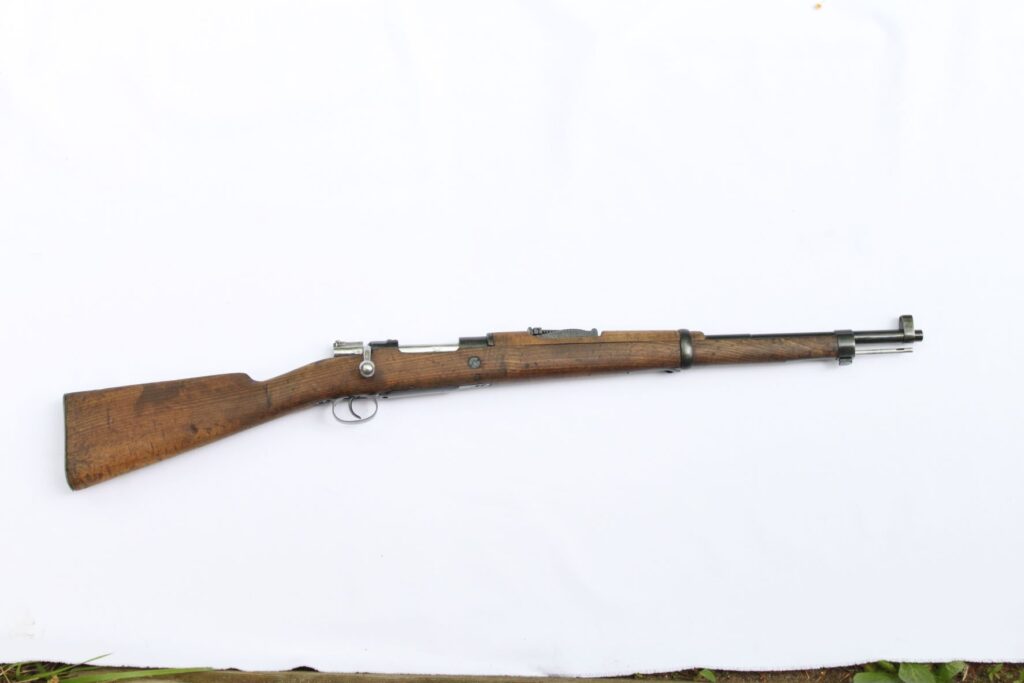
By Jim Dickson | Contributing Writer
The Model 1893 Spanish Mauser introduced controlled feeding for the first time in Mauser rifles where the cartridge rides up under the extractor which keeps it from moving out of line with the chamber until the cartridge is ejected.
This is vital for a combat rifle because any violent movement while trying to feed a cartridge into the chamber can send the cartridge flying. This is why dangerous game hunters insist on controlled feeding. It sure saved the lives of a lot of WWII German soldiers. The German army taught its men to fire one shot and then roll out of the way when possible to avoid the return fire from the enemy’s squad light machinegun. A lot of men worked the bolt while rolling. You can do that with controlled feeding but if you try it with a gun without it you may send the cartridge flying for parts unknown instead of going into the chamber where it should be.
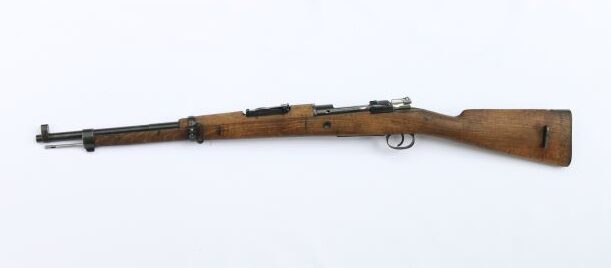
The Model 1893 Mauser also introduced the staggered magazine with this model which would be standard on all future Mauser models.
When in 1954 Spain adopted the 7.62X51 NATO as its war weapons caliber (.308 Winchester) a lot of Model 1893 Spanish Mausers, the first bolt action weapon used by the Spanish army which had also been used through the Spanish Civil War, were left stored at many armory parks.
During the 1950´s and 1960´s, the most common version, the Mauser 1916 model, was recalibrated at the armory parks. As a result, they produced the FR-7 (Reformed Fusil Nº 7), a hybrid between the CETME assault weapon and the Mauser rifle Model 19: they substituted the barrel with one with the same characteristics than the CETME in caliber, length and sight system including the same thread for the muzzle. These weapons were used to train the soldiers in the use of the sights. Some models kept using the same stock as the 1916 although this version is less common.
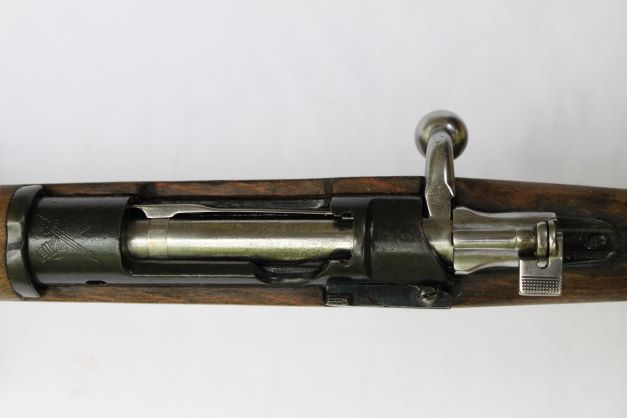
The recalibration of the 1916 model was done in two different ways: the principal consisted of substituting the 7×57 barrel with one in .308 Win. Another, less common, way required the retooling of the 7×57 barrel and its new rifling that, in addition, housed a new chamber with different dimensions than the original.
The two ways of recalibrating were perfectly secure, passing the military inspections controls. These weapons were intensively used until they were sold as surplus to other countries. It cannot be generalized that these weapons have quality problems, but that some units have arrived to today in different states of conservation.
I recent years, certain armchair experts have libeled these conversions saying they are unsafe to fire. Nothing could be further from the truth. When a European proof house proofs a gun it makes sure that it is safe to fire with any factory ammunition that will chamber in it. If the army wants to use some lower pressure ammo for better full automatic fire control in their CETME assault rifles that’s their business. The Government Proof House’s business is to make sure that every gun that goes through there is safe for any factory ammo it may encounter.
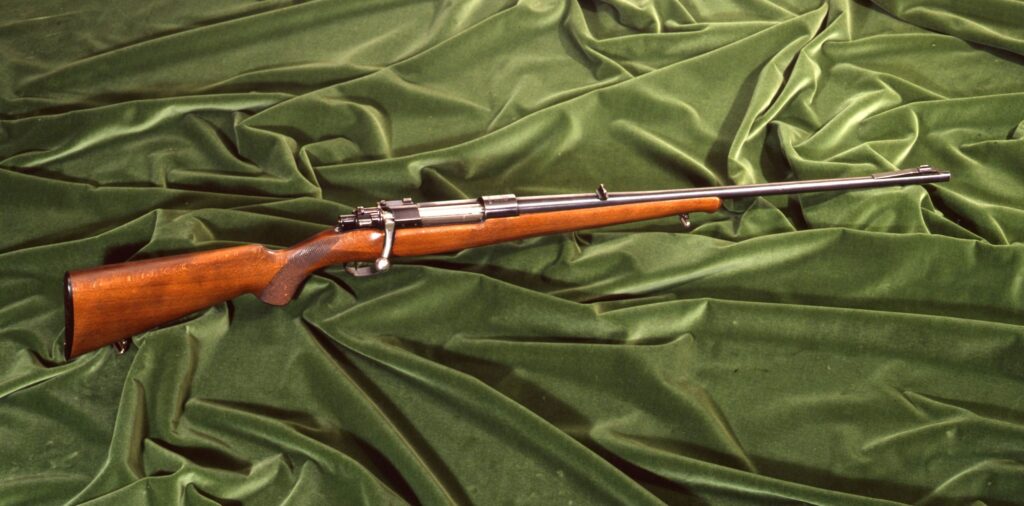
When I spoke to the Spanish Government Proof House they were outraged that anyone would say such a lie about the guns that had gone through there. They pointed out that these rifles had seen long successful service first with the Spanish military and then with other militaries when they were sold as surplus. If any of them had blown up they would have been the first to know about it. If that’s not good enough for you, note that when these guns were first brought into this country they were tested by the H.P. White Laboratory and pronounced safe.
To demonstrate this safety, I scraped together 1,604 rounds of assorted .308 and 7.62 NATO consisting of:
100 rounds of Black Hills .308 with 150 grain Hornady SST bullet
20 rounds of Fiocchi .308 180 grin Match
80 rounds of Barnaul 145 grain FMJ from MKS Supply
850 rounds of Aguila 150 grain FMJ
240 rounds of Armscor 147 grain FMJ
80 rounds of Hornady168 grain A-Max
80 rounds of Hornady 178 grain GR ELD-X
50 rounds of Georgia Arms 168 grin BTHP Match
50 rounds of surplus 7.62 NATO of unknown make
54 rounds 7.62 NATO of unknown make with a copper plated steel jacket SP and lacquered steel case.
To shoot them I had a Spanish Model 1893 Mauser converted to 7.62 NATO which I borrowed from Hunter’s Lodge in Ethridge, Tennessee. No problem. Just a sweet shooting little gun that I wish I could have kept. This was one of the rarer guns that retained the configuration of the Model 1916 short rifle which I had always admired.
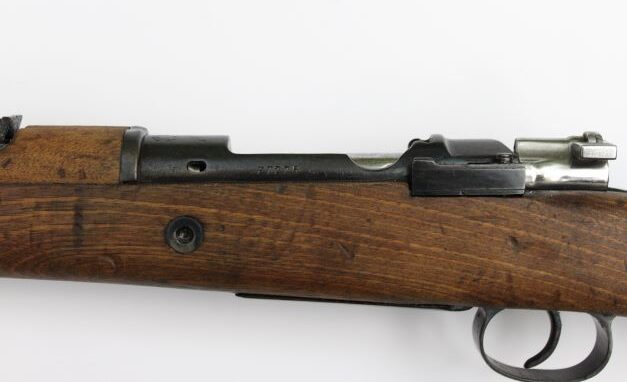
There were only minor differences between the 1893, 1894, 1895, and 1896 Mausers and many of their users felt the Model 1898 Mauser did not offer sufficient improvement to justify adoption. I had a British Best Quality gunmaker tell me that he thought all these models were the same strength. Personally, I would not be surprised if it turns out that due to its superior Swedish steel the Model 94 and Model 96 Swedish Mausers turned out to be the strongest of all the Mauser military rifles.
Unfortunately, as mentioned previously, the armchair experts asserted all pre-Model 98 Mausers as unsafe for 7.62 NATO and specifically libeled the Swedish Mausers as unsafe in this caliber. This is certainly news for European shooters who have been using them for years.
Both the Carl Gustav and the Norma factories made conversions to 7.62 NATO designating the civilian version as the CG63 Competition/Target Rifle. The ones that went to the Swedish Army were several models, the Gevor 7, CG73, CG74, and CG80. Many of these guns do double duty as hunting rifles using all types of .308 sporting ammo.
The British Best Quality gun trade made rifles using the M94 Swedish Mauser actions for any cartridge that would fit through the action that their customers ordered for as long as the actions were available. They preferred the Swedish Mauser because the action itself was already made to Best Quality standards. All these guns passed British government proof house testing before being sold and have proved perfectly safe in all calibers.
Husqvarna also made sporting rifles on the M94 Swedish Mauser actions. Like the British they would chamber them for any cartridge the customer desired that would fit in the action. Standard calibers were .220 Swift, .270, 30-06, 6.5X55, 8MM Mauser, 9.3X57 (286 grains at 2070 FPS), and 9.3X62. The latter makes the 7.62 NATO look like a pipsqueak by comparison. The 9.3X62 is a .365 diameter 286-grain bullet at 2360 FPS. Compare that to the famed .375 H&H Magnum’s .375 diameter 300-grain bullet at 2500 FPS and you see that the .375 H&H is only 1/100th of an inch wider, 14 grains heavier, and 140 FPS faster. Yet the .375 H&H requires a longer action whereas the 9.3X62 fits in a standard length action.
Thanks to consistent bullet performance the 9.3X62 has a better track record on African big game than the .375 H&H, which at various times has had bullet failures due to poor bullet construction in some ammo. The powerful 9.3X62 is considered perfect for European Moose, wild boar, and bear resulting in it’s always being a popular chambering for the M94 action.
When I talked to the Husqvarna factory they could not believe that anyone would be so stupid as to question the strength of the well proven Swedish M94 and M96 actions. This was the same reaction I got from the British Best Quality gunmakers I consulted.
So there you have it. The guns are safe.



